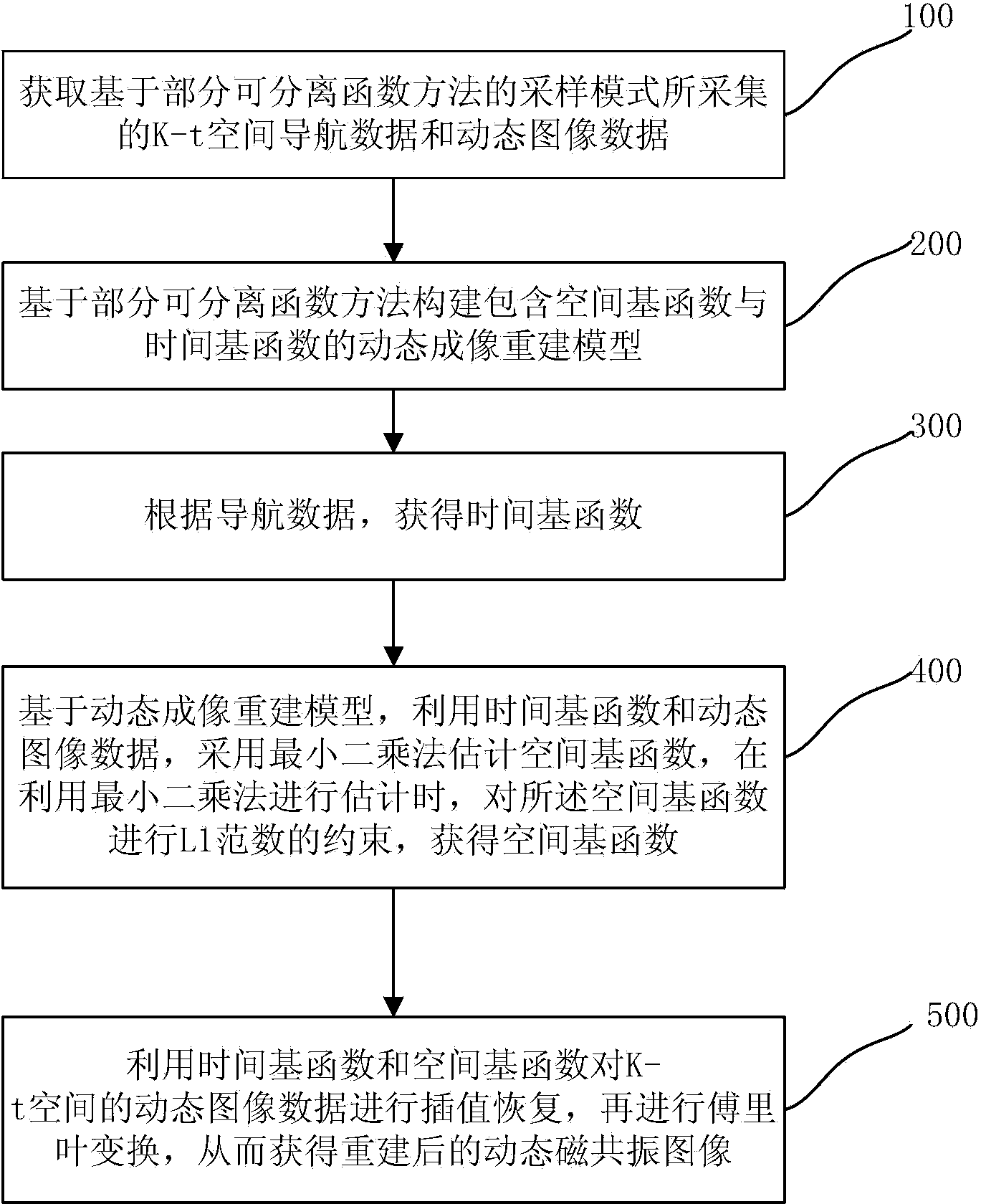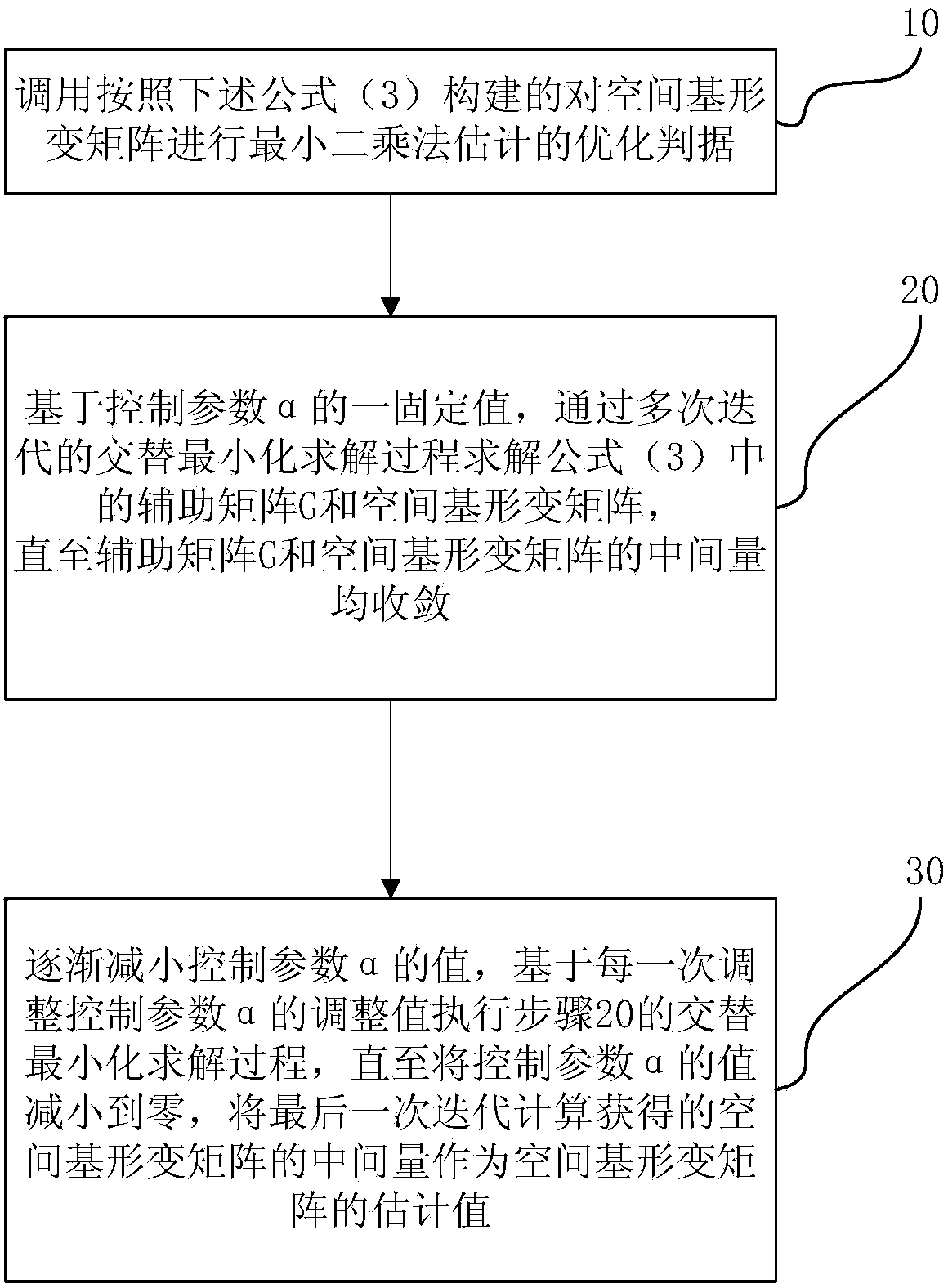Method and system for dynamic magnetic resonance imaging
A technology of magnetic resonance image and imaging method, which is applied in medical science, sensor, diagnostic recording/measurement, etc., can solve the problems of difficult clinical application of magnetic resonance imaging, inability to accurately calculate highly undersampled image signals, and low robustness.
- Summary
- Abstract
- Description
- Claims
- Application Information
AI Technical Summary
Problems solved by technology
Method used
Image
Examples
Embodiment Construction
[0094] Based on the dynamic magnetic resonance imaging technology, the present invention improves the existing partially separable function model, uses the principle of low-rank matrix recovery to separate the magnetic resonance signal into limited time and space basis functions, and combines the time basis function and For the measured dynamic image data, the L1 norm is used to restrict the spatial basis function to avoid excessively smooth images like the TV (total variation) operator, so as to avoid the trade-off relationship between time and space resolution in magnetic resonance imaging, and avoid In the traditional method, the correlation of K space and time is used to improve the estimation of missing data, and the problem of inaccurate fitting of lost and uncollected data can also be reduced. It can also reduce the influence of noise on the image, reduce image artifacts and reconstruction noise, Greatly improved image quality. Various specific implementations of the pr...
PUM
 Login to View More
Login to View More Abstract
Description
Claims
Application Information
 Login to View More
Login to View More - R&D
- Intellectual Property
- Life Sciences
- Materials
- Tech Scout
- Unparalleled Data Quality
- Higher Quality Content
- 60% Fewer Hallucinations
Browse by: Latest US Patents, China's latest patents, Technical Efficacy Thesaurus, Application Domain, Technology Topic, Popular Technical Reports.
© 2025 PatSnap. All rights reserved.Legal|Privacy policy|Modern Slavery Act Transparency Statement|Sitemap|About US| Contact US: help@patsnap.com



